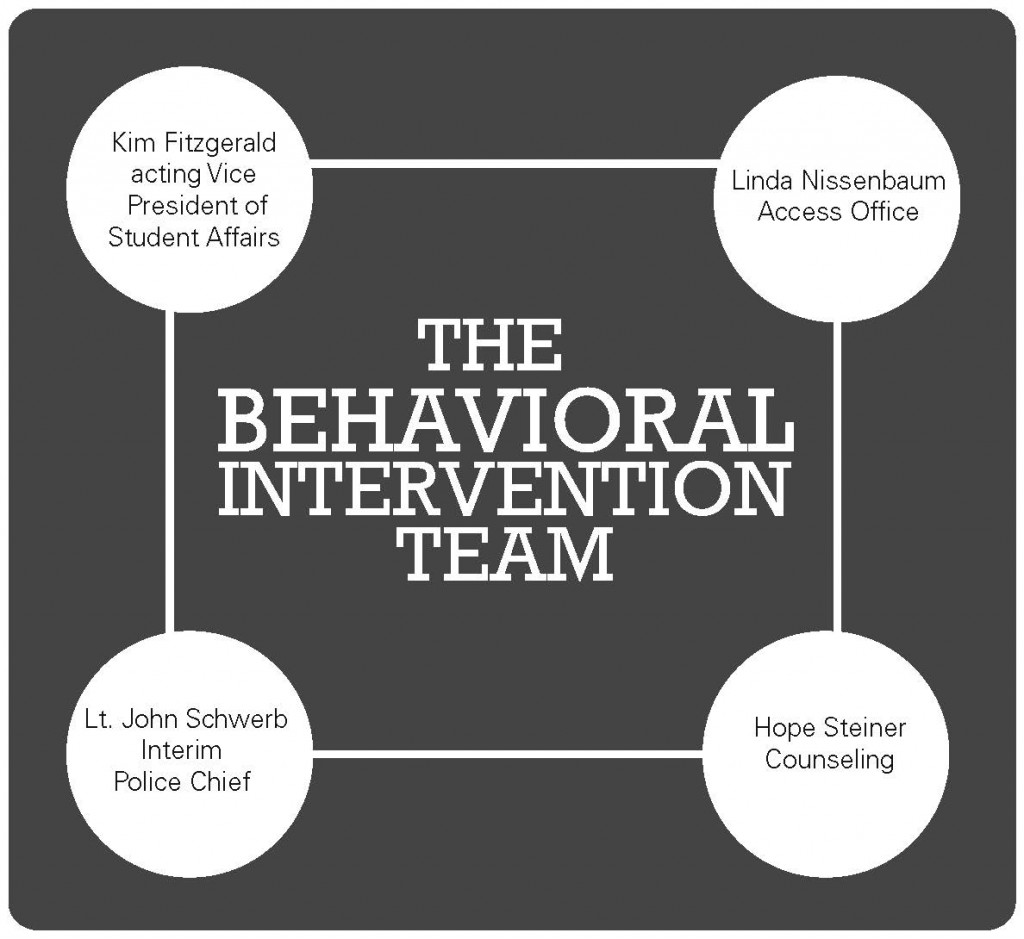The Behavioral Intervention Team steps in to stop potential problems all across STLCC
By: SPENCER GLEASON
Editor-in-Chief

Since the board of trustees released the Investigation Report of the April 18 incident, on Aug. 15, the Behavioral Intervention Team (B.I.T.) process has been brought to light.
“The B.I.T process needs to be formalized and revised,” according to the report.
On Thursday, Sept. 12, a public safety forum was held on the STLCC-Meramec campus, in part to help explain the B.I.T.
The four-member group consisting of acting Vice President Kim Fitzgerald, Interim Police Chief Lt. John Schwerb, Linda Nissenbaum from the Access Office and Hope Steiner from Counseling meet once a week to discuss problems with students that have been reported by other students or faculty. The B.I.T. relies on information given to them by faculty or students via the Behavior Incident Report Form on the Meramec website.
“St. Louis Community College at Meramec is committed to the safety, security, care and welfare of its community. In order to continually evaluate this commitment, a B.I.T. team has been established to assess potential problems involving individuals who may be in violation of college policies or present a danger to themselves or others. The primary goal of the B.I.T. is to ensure early intervention and prevention,” according to the B.I.T. manual.
Within a Behavior Incident Report Form, are six questions concerning the situation at hand, including the level of concern and if the behavior has been observed in the past.
“They ask the person completing this [form] ‘Do you think this is a low, moderate or high risk?’ We rely heavily on the person who’s filling it out to determine if something really needs our attention,” Fitzgerald said. “There is an option on there that says, ‘Are you looking for action?’ Sometimes the best action is no action. They just want us to have this person on our radar, in case this pops up someplace else.”
Once a report is filed, each member receives an email and the process for that situation begins.
Fitzgerald, who has been in her position since Aug. 26, has seen “10 to 12” reports come through.
“A lot of them are just for information only, which is not a bad thing,” Fitzgerald said. “A handful of them have required some action. I’m finding out that it’s all different.”
For situations that require immediate attention, Fitzgerald says that Campus Police would jump right in.
“It’s a judgment call. If it was something that was threatening or alarming and something that required immediate attention, I think the best thing to do would be to contact Campus Police,” Fitzgerald said. “If it’s something that is troubling, like a student sitting in class and crying uncontrollably, then we would go right to counseling. We wouldn’t say, ‘Go fill out a report and we’ll get back to the student later.’ In each individual instance it’s nice to have this documented, so we get it firsthand from the person who observed the behavior and we know what was going on.”
With some STLCC students taking classes at different campuses, each of the four main campuses have their own B.I.T.. Although STLCC-Forest Park, STLCC-Florissant Valley and STLCC-Wildwood each have their own B.I.T. programs, information is still shared between them.
“The report doesn’t go directly to the B.I.T. team at other campuses,” Fitzgerald said. “Meramec ones go to Meramec people. That said, it’s all logged into a B.I.T. viewer. All the B.I.T. teams and all the Campus Police have access to the B.I.T. viewer. So if a student is going to school here and Forest Park, I can see any reports on them at Forest Park. It’s not such that we just pour over everybody’s information. It’s just gathered in one spot.”
With the first few weeks of school Fitzgerald understands that students and faculty are getting into the swing of things. Although tempers may flare in the heat of the moment, Fitzgerald says it is best to catch situations early before they escalate.
“I think the first couple weeks is mostly students making the adjustment to what the expectations are. It’s a stressful couple weeks for any student—getting into class and figuring out what’s going on,” Fitzgerald said. “People lose their tempers and have outbursts. Those things all need to be caught and dealt with, instead of letting things escalate until the point where they are out of control. The B.I.T. helps us catch behaviors that might require some intervention.”










